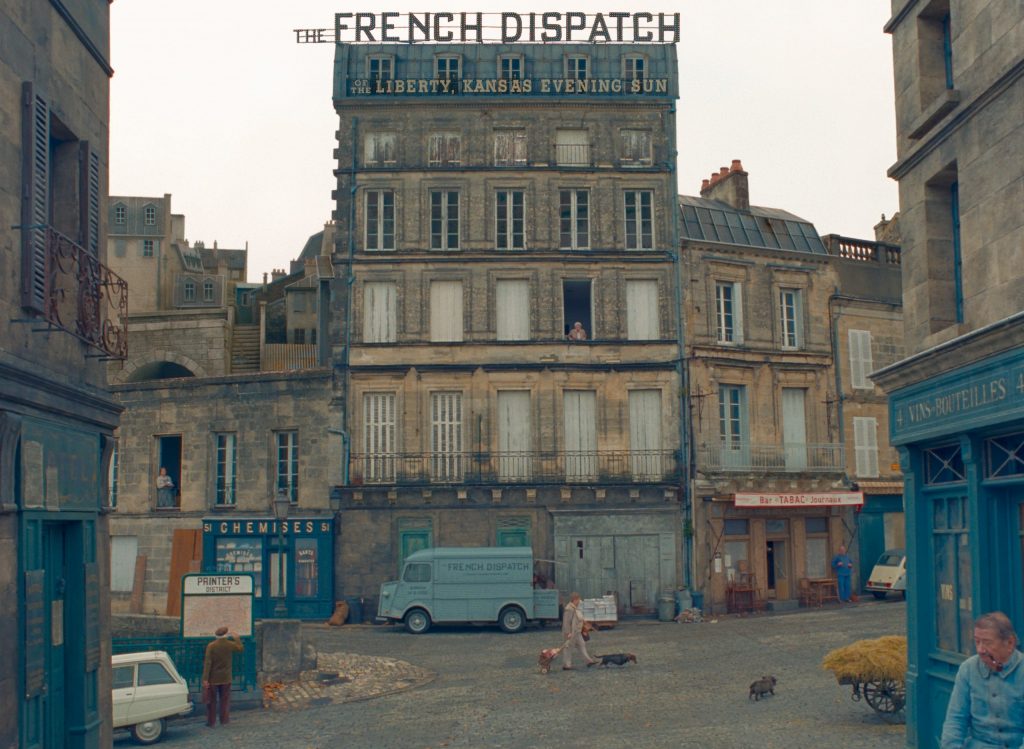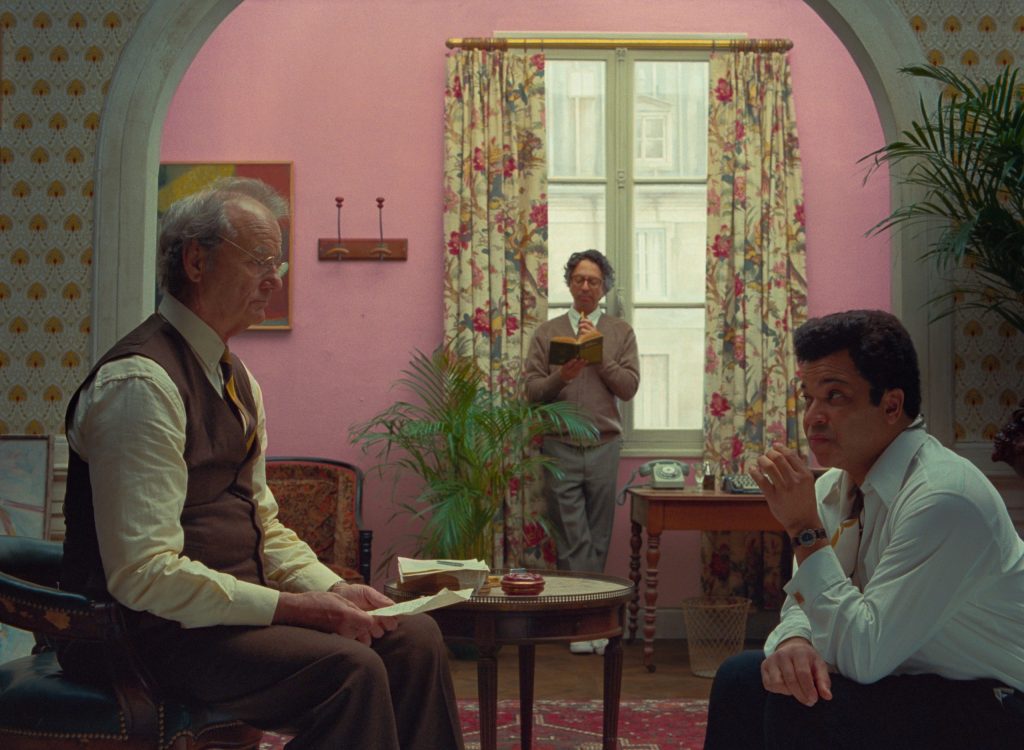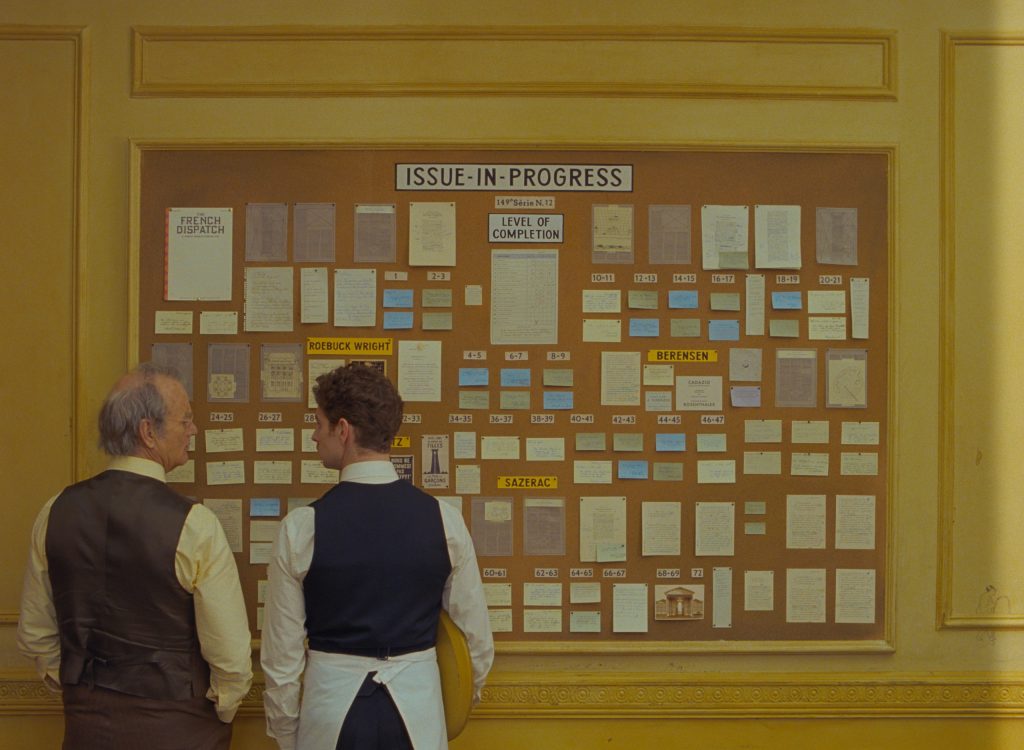Review: Wes Anderson writes a love letter to ‘The New Yorker’
Review: 'The French Dispatch' is Wes Anderson's love letter to 'The New Yorker'

Watching The French Dispatch is like reading The New Yorker: about 90% of it was clear and understandable and the other 10% was too high culture. I would have needed a dictionary and a second viewing to fully understand what I saw. However, much like reading The New Yorker, this film is an artistic and technical masterpiece that made me gaze starry-eyed at the screen in awe of its beauty.
In a clear love letter to the magazine, Wes Anderson is able to create and direct a world within its pages that immerses the audience into the culture of a fictional city in France. This film is unmistakably Wes Anderson, in fact, it’s probably his most Wes Anderson-y film to date and that’s what makes it all the more wonderful.
The plot is structured like a copy of The New Yorker straight off the newsstand. There is a table of contents, a short travel guide of the city and three feature stories which make up the rest of the film. Each feature tells a unique story different from the last and each carries a new tone and narrator just like reading the various stories by different writers within The New Yorker. Much like reading a magazine, some stories hit and others flew over my head, which is not necessarily a knock on the film, it really means there are many different tastes represented throughout the film.
Each feature in the magazine is about a piece of art: a painting, a manifesto, and food. This art is featured in each story in color while the world around it is in black and white — almost as if the people and artists of the story are the words in the magazine and the art is the photos that complement the words. The action sequences throughout the film are also innovative and uniquely depicted to feel more like a magazine than a film. A car chase is completely animated and drawn out in a way that resembles The New Yorker’s comic strips.

(From L-R): Bill Murray, Wally Wolodarsky and Jeffrey Wright in the film "The French Dispatch"

Bill Murray and Pablo Pauly in the film "The French Dispatch."
In this film, Anderson pulls techniques from all his other films, creating moments of action reminiscent of The Grand Budapest Hotel and adding in sequences of stop-motion effects a la Fantastic Mr. Fox and Isle of Dogs. He also uses techniques like 2D animation and black and white film to create a new world, unlike anything he’s made before.
To make the world even more distinct and Anderson-y, Alexandre Desplat, who has scored many of Anderson’s previous films, created a French-inspired whimsical original score that is complemented by old French songs by other artists. Desplat’s score creates musical motifs for each story and helps create tonal shifts that give each story its own voice while keeping them similar enough to make it clear all these stories go together, much like The New Yorker’s own distinct writing style.
Anderson has a way of gathering a fabulous ensemble of A-list actors in his films and this one brings together the regulars and some new faces that seamlessly fit into the unique world of his catalog of films. Adrien Brody and Tilda Swinton, who are no strangers to Anderson’s films, give boisterous performances that carry the old Hollywood acting style that is present in all of Anderson’s films. New to the ensemble was Jeffrey Wright, who played the lonely food critic Roebuck Wright, and Timothée Chalamet, who played the over-confident student revolutionary Zeffirelli. All these eclectic actors come together to make an ensemble that contrasts and highlights each other in a great way.
The French Dispatch woos with its visuals, stuns with its ensemble, and encapsulates everything, the good and the quirky, that is a Wes Anderson film. This aesthetic masterpiece managed to turn a magazine into a film of unique stories that highlight the magic and intelligence of both The New Yorker and Wes Anderson films.





